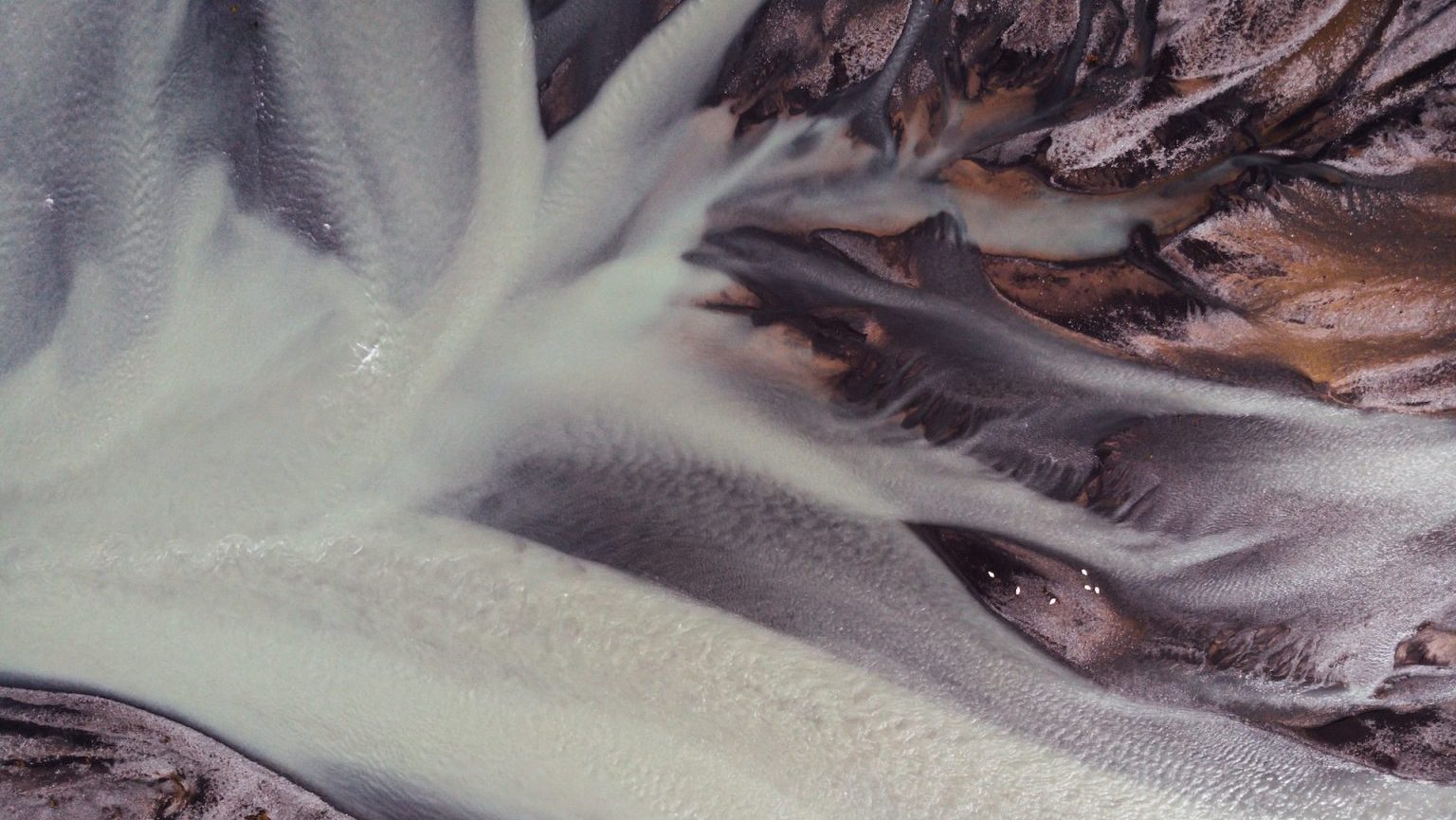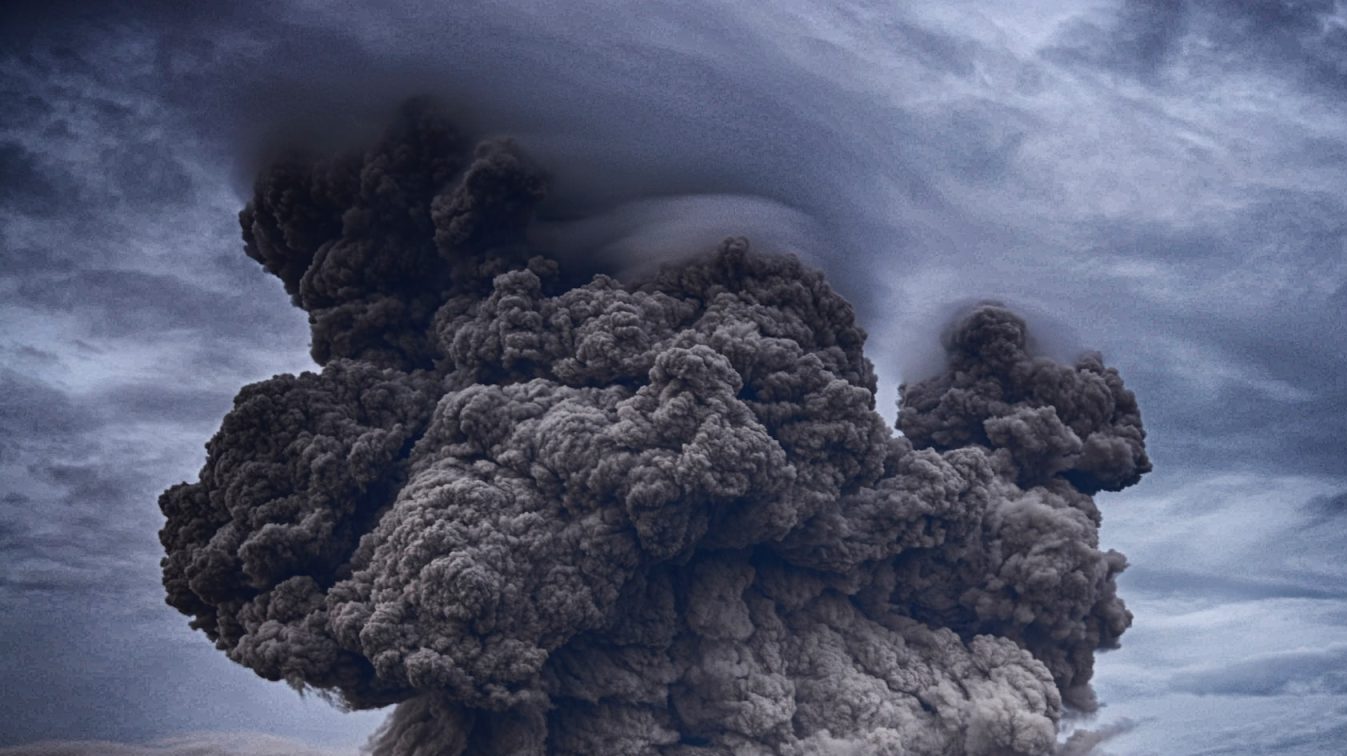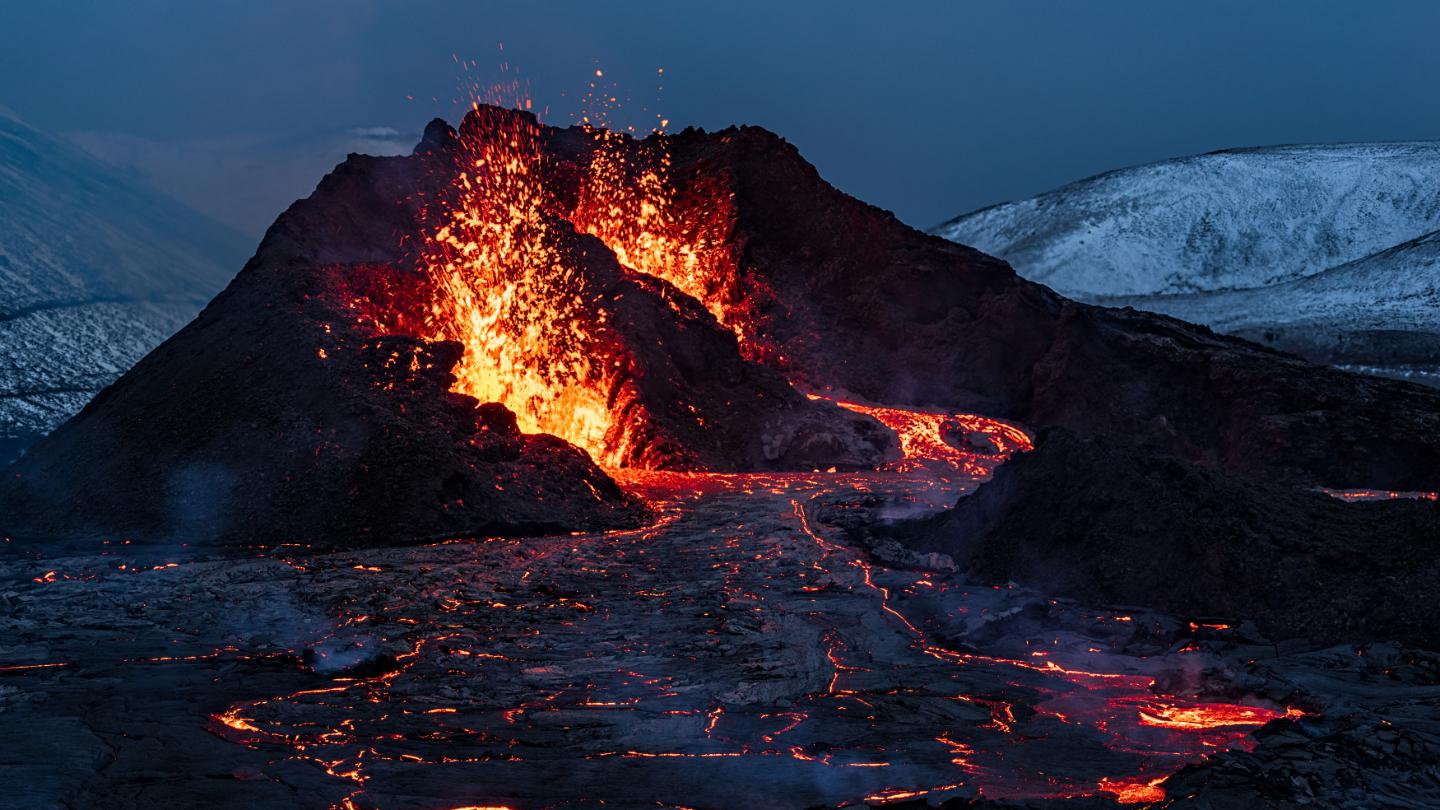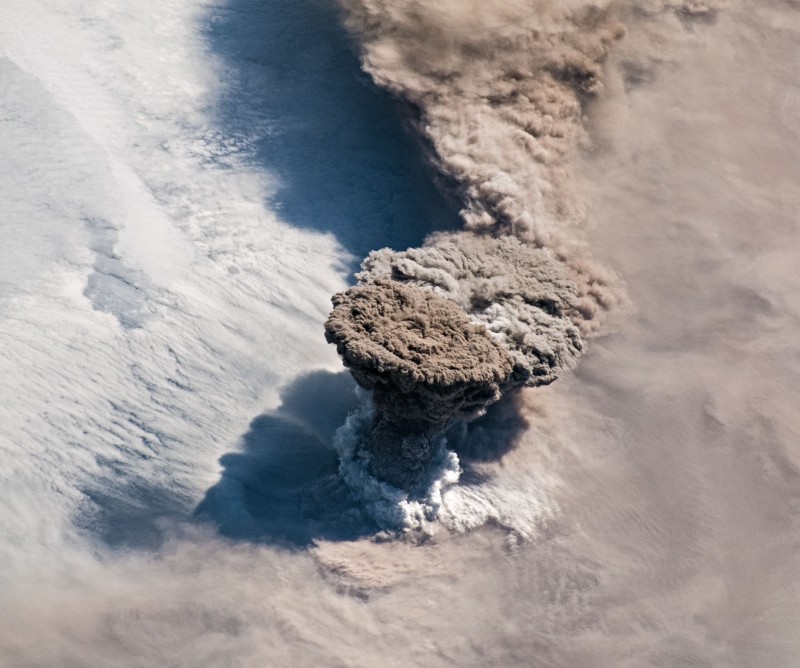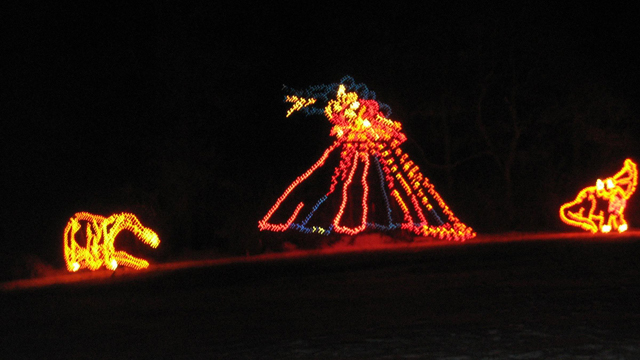Dr. Adam Kent answers your questions about Mt. Hood (and more)

Afters months of waiting, I have finally been able to get my act together enough to post the answers to questions you posed to Dr. Adam Kent. If you remember back to the beginning of the fall, Dr. Kent and his colleagues published a paper in Nature Geosciences about the nature of magma mixing and eruptions at Mt. Hood in Oregon. You sent in questions and now you get some answers. Enjoy!
Mountain Man Mike: I’ve been thinking of moving to government camp at the base of Hood. What kind of danger would that town be in if an eruption were to occur?
Adam Kent: The town of Government Camp is actually in the highest risk zone for future Mount Hood eruptions (see this discussion and map). This is because it lies beneath the vent site (Crater Rock) for the two most recent eruptions (Old Maid at ~220 and Timberline at ~1500 years before present). The typical Mount Hood eruption involves formation of a dome at the summit, which eventually collapses under its own weight in a hot debris flow (think avalanche of superheated rocks). Government Camp is actually close enough to the vent to be in the “proximal hazard zone”. If you look at the volcano from the south you can see a smoothish swath of land extending down from Crater Rock down to about Timberline Lodge. This is the result of a large collapse and landslide accompanying the 1500-year-old Timberline eruption. So if an eruption occurred that was similar in scope and style today Government Camp area (and Timberline Lodge too) would be at risk.
Having said all that the overall chance of future eruptions that produce lahars is rated by the USGS as something like 3-6% over the next 30 years. Not all of these eruptions might threaten Government Camp, so the overall chance of an eruption appears low on the decadal timescale. In addition there would likely be plenty of warning that an eruption was underway (again if the next eruption follows the style of the previous ones). Mount Hood is well monitored and the indications that an eruption was imminent would probably be clear (increased seismic activity, changes in gas and stream chemistry etc.). The USGS keeps a very careful eye on Mount Hood. You can look at the seismic monitoring record at the USGS CVO website. Keep in mind that although earthquakes near or underneath Mount Hood are pretty common most seismologists believe that they are related to tectonic activity (Mount Hood is also located near a lot of faults) and not related to magma moving beneath the volcano.

Dr. Adam Kent, Associate Professor of Geosciences, Oregon State University, as calm and cool as ever.
D Sisko: I’m curious about the more mafic nature of Hood relative to the other Cascade volcanoes. Are there any proposed mechanisms for why this should be the case? It seems that it must be coincidental that Hood happens to be in the CRBG — surely the CRBG can’t supply any mafic magma, but are there other interactions as a result?
Adam Kent: Mount Hood is actually less mafic than many Cascade volcanoes (as it lacks a lot of basaltic output), but you are correct in one way in that Hood also lacks the evolved magmas (rhyolites) that are known from some Cascade centers (Crater Lake, Three Sisters). I am not sure what the role of the CRBG (Columbia River Basalts) has in all of this. There is no magma of the CRB type left now, (most CRB are ~15 or so million years old). However the thick sequences of the CRBG in this area could certainly influence the properties of the crust in the region, which in turn influences the ability of various magma types to move. So there could definitely be some effect.
Birdseye: Where do the mixes of magma required for an eruption here take place?
Adam Kent: Good question. Most evidence, including some that we have gotten fairly recently suggests that it is probably occurring at something like 3-6 km below the surface. In many volcanoes this depth is where shallow subvolcanic magma storage occurs.
Henrik: As I understand, they base that on a guesstimate that Mt Hood will erupt sometime within the next 450 – 900 years (?) and an assumption that an eruption of Mt Hood will generate lahars. What is the current professional opinion?
Adam Kent: As I noted above the probability of eruption sometime in the next 30 years is somewhere in the 1 in 15 to 1 in 30 range, as assessed by the USGS. In terms of the slightly longer time period it is difficult to say, but given that there were major eruptions 220 and 1500 years ago, then I feel that the probability of eruption over the next 450-900 years is better than even. Most recent eruptions of Mount Hood have produced lahars of some type so the chance of a future eruption doing that are pretty good, and lahars represent a major hazard associated with an eruption. All the major river drainages around the volcano such as the White, Salmon, Hood and Sandy Rivers have lahar and other debris flow deposits along them, including some huge ones associated with sector collapse events. If you look at the hazard map from the USGS, you will see that estimated lahar travel times are marked along the major drainages.
Lurking: I’m more interested in the age of Mt Hood with respect to the Crooked River caldera and the Deschutes lava events. Do they influence the underlying terrain that Hood formed on top of? Are they (well, Deschutes is probably too young) influential in the mixing issues noted in the referenced links? In other words, if the Crooked River event(s) tephra and faulting (>25 myr) might have an influence.
Adam Kent: These rock units and events probably do not have a huge influence, although they and Mount Hood are all related to the long-term subduction of oceanic crust along the west coast of North America. It is possible that the older volcanic units that occur beneath Mount Hood and that reflect earlier volcanic episodes help to form a “density” barrier that prevents more dense (read basaltic) magmas form rising up through the crust in this location.
I was recently out at Smith Rock and was reminded how amazingly thick those tuff sequences are there. Would have been an interest place to be in the late Oligocene! We also have some research at OSU (Oregon State) starting up in the Deschutes basin and there are some good ignimbrites out there too. If you know where Lower Bridge (on the Deschutes River) is near the town of Terrabone, then there are some good exposures of ignimbrites and associated accretionary lappilli falls and other cool rocks in road cuts near there. The top of the section also has basalt flows and diatomite as well. A great place to visit, and you can fish the Deschutes River when you’re done!
Angel Rivero: My question is what to do or where to go if Mt. Hood wakes up one day… and when this could be?
Adam Kent: Well the answer depends on whether you want to get away or get to watch it! Eruptions in the past at Mount Hood have almost never involved large explosive events (i.e. think Pinatubo or Mount St Helens in 1980). Instead the eruptions involve lava domes that collapse and form hot block and ash flows and or lava flows. For that reason if Mount Hood does (or when it does…) wake up again, the people that are not close to the volcano will probably not be at a high risk. The primary places to avoid are shown on the hazard map, which include areas immediately beneath the Crater Rock area on the south side and along the Salmon and White River drainages which would be at risk of lahars. If an eruption occurred on the north side then there would also be higher hazard risk on the slope of the volcano on that side and along the Hood River drainage. Again with the type of eruption expected there should be quite a bit of warning. Interestingly there have also been some pretty large non-volcanic debris flows from Mount Hood recently. The one on the White River that cut the road to Mount Hood meadows received a lot of news coverage a few years ago, and I have also seen the results of a large one on the north side (I think Erik was with me that day). These are not related to volcanic activity, but part of the normal erosion of such a large mountain. There is some suggestion that non-volcanic debris flows and landslides are more frequent during the “Pineapple Express” storm systems that can produce intense rainfall in Oregon. There have also been several recorded Jökulhlaups (glacial outburst floods) since settlement of the region.

Dr. Kent and former OSU graduate student Dr. Michael Rowe, hard at work in the field.
Mike Don: I’d always understood that because of viscosity (and temperature differences) magma mixing to produce a hybrid andesite -without evidence of hybrid origins like partly resolved phenocrysts – was a relatively slow process, and that the likely effect of injecting mafic magma into a cooling felsic body would be rejuvenation through heating, additional volatiles etc, leading (possibly in a very short time) to an eruption, often a violent one, of the felsic magma, perhaps with quenched blebs of basalt/basaltic andesite appearing in the eruption products. Have I got the wrong end of the stick here, or am I confusing two different processes?
Adam Kent: Yes that is one view, and is certainly a plausible scenario. However the evidence at Mount Hood and other similar volcanoes is that, at least in some cases, mixing can occur quite quickly to produce a broadly homogenous mixed magma, and still be efficient. The physics of this are not well understood but it may be that convective overturn related to the intrusion of basaltic magma into a more felsic reservoir is an efficient driver of mixing, even if the viscosity of the two magmas involved are not a great match.
Can instances where the composition of melt in inclusions differs significantly from the composition of the groundmass surrounding the same crystal be evidence of mixing?
Yes this can be the case, although it is also possible that these differences could arise because the melts trapped in inclusions has been “shielded” from subsequent magma evolution and thus is simply less evolved than the groundmass. However many times you see large variations in compositions between different melt inclusions, even where these are in the same crystal, and this is pretty good evidence for magma mixing.
Crater Rock seems to be in an unstable location for a dome, extruded onto a fairly steep slope; it looks as if the present dome was extruded as a single, fairly rigid mass, like a piton. What is its structure? And since it is perched at the top of a steep slope, and is subject to hydrothermal alteration (active fumaroles) is there a potential collapse hazard even without volcanic activity?
Adam Kent: You are right – Crater Rock is really perched up high, and when you get up there it is pretty steep. I was wishing for my crampons last time I was up there! From my observations that part of the dome in not strongly altered, although the fumarole field below it is heavily altered. The structure of the dome is not immediately apparent – the rock up there is fairly homogenous with no obvious consistent flow foliation or banding. However the dome lacks the “gouge” that was observed during intrusion of the 2004 Mount St Helens dome – which was intruded more or less like a “piton” (I like the analogy).
Anyway, beside all that I would also think that there is significant collapse hazard. The dome itself is heavily fractured and fairly active in terms of minor rock fall. Once you get up there you can see that a lot of collapses from that edifice would actually head down the White River valley rather than down towards Timberline Lodge. In fact the most recent eruptive event, the ~220 year old Old Maid eruption did just that – forming block and ash deposits down the upper part of the White River valley.
Kevin Walter: I was wondering if it was a foregone conclusion that a future eruption on Mt. Hood would occur from the Crater Rock site or was it possible for it to occur at some other site such as near the top of Eliot Glacier? I was also wondering about the survivability of Timberline Lodge during anything other than the most minor of eruptive events on the SW side of the mountain?
Adam Kent: Firstly, I think that the most likely locus for a new eruption is indeed Crater Rock, as it was where the two most recent eruptions (220 and 1500 years ago) occurred. Of course other locations would also certainly be possible. In the event of a new eruption centered at Crater Rock, Timberline Lodge would definitely be evacuated. Whether or not it was in danger of being destroyed would depend on the exact location and type of eruption. I think that for a summit eruption much of the lava or debris flows that resulted might be channeled away from Timberline by the White River valley and other drainages. That might help keep Timberline safe. This is my own speculation – the USGS probably has a more definitive answer for that.
Lockwood: No names, but In the mid-80’s, I watched a dissertation defense by a student OSU who was working on magma genesis in the OR Cascades. In passing he mentioned he felt magma mixing could explain some of the problems surrounding sources of andesite. One professor, now retired, took him on in an amiable sort of way- I had the sense they had been through this discussion multiple times, probably in far more technical detail. I have a good, strong undergrad degree from OSU, but don’t know too much about the gory technical details of andesitic magmas. In general terms, why might a prof object to the hypothesis of magma mixing to address that problem, at least as of 20-25 years ago? What aspects/problems of andesite genesis are thought to be solved with magma mixing, and what, if any, are not?
Adam Kent: This was a long-standing question in the field of geology. In particular, from the 1950’s through 1980’s there was considerable debate about whether andesites formed directly from melting of the mantle or lower crust, differentiated form basalts or whether they resulted from mixing. Like many debates in science there are often enough elements of truth on both sides that each side became pretty polarized. I am guessing that this was the source of the good natured discord you observed.
Although it might be possible to form an andesite from melting or differentiation of basalt, many andesites in subduction environments like Mount Hood show pretty unmistakable evidence for generation through magma mixing. Andesites from Mount Hood are particularly clear in that respect. This includes things like minerals that are not in equilibrium with each other (and would need to be juxtaposed with each other at a relatively late stage by magma mixing), and mafic “enclaves” or inclusions that are remnants of one of the mixing magmas. In this respect the mixing hypothesis makes good sense in many andesites in subduction zone environments.
Me: Is Mt. Hood more of an anomaly for the Cascades in terms of what might trigger eruptions and generate the compositions of lava erupted?
Adam Kent: I think that magma mixing (also often called magma recharge) is a very widespread and effective way to trigger eruptions in many volcanic systems. Mount Hood seems to be somewhat of an anomaly in that almost all eruptions seem to require this trigger to get started. Other volcanoes (Mount St Helens) appear capable of erupting without magma mixing or recharge being the triggering effect, although it still appears to play an important, if subsidiary, role.
Is there any way your findings on the generation and triggering of eruptions at Mt. Hood could help with future monitoring of the volcano?
Adam Kent: Yes, very much so. For a start it gives us a roadmap to what the start of a future eruption at Mount Hood might look like. I would expect that deep seismic evidence of magma movement, possible combined with changes in heat flow, gas emissions and fumarole chemistry would indicate intrusion of mafic magma deep under the volcano. After this, if the timescales that we calculate are correct, we might have something like weeks to a few months prior to magma actually erupting at the surface.
What got you interested in working on Mt. Hood? Are there any other Cascade volcanoes that you might next examine?
Adam Kent: When I moved to Oregon and decided to start working on Cascade volcanoes I was stunned to find out that such a prominent volcano as Mount Hood had only a single academic paper on it since 1995. The USGS had also done a lot of work aimed at hazard assessment but the door was wide open for studies of the origin of the magmas. The volcano is also visible to about 1/3 of the population of Oregon on a daily basis, and presents significant hazards to these people and to significant infrastructure. Finally the reason why few people had worked on it (because it was just a pile of boring andesite) was interesting and compelling to me. What drives a volcano to erupt the same composition again and again for 500,000 years? I also felt that was a question of broad interest and would turn up an interesting answer. We also have other studies looking at the water content in Mount Hood magmas and dating the ages of the crystals in the lavas. I plan to keep working there for some time as a result.
For the next Cascade volcano that I would like to work on it will be one that has societal relevance. Erik – you and I have talked about Newberry, and that is still a volcano that I am interested in working on further (shame we got trumped this time!). That is one big volcano!
Could you explain what exactly is a crystal size distribution and what it might tell us about the sources of crystals in a lava/magma?
Adam Kent:Crystal size distributions are simply a measurement of the sizes of the crystals present in a given rock. The results are basically a histogram where you compare size versus frequency. Crystal Size Distributions can help you identify groups of crystals that may have had a similar history or that may come from a specific source.
Could you tell us about laser ablation analysis of minerals and/or melt inclusions? How does it work and what can it tell us?
Adam Kent: Laser ablation is a technique for making chemical or isotopic analyses of solid materials. In brief a powerful laser is used to volatilize (or “ablate”) material from a sample surface and then that material is fed into a plasma mass spectrometer for analysis. The value is that the laser can be focused to a very small spot (as small as 10 µm) so we can make measurements in small regions inside individual crystals. For volcanic rocks this advantage is that we can look in detail at the chemical record in individual mineral samples and from that learn about the conditions of formation of that crystal. This tells us things about the pressure and temperature conditions of the magma in a volcanic system, the age of the crystal and, in the case of Mount Hood, even work out what caused the magma to erupt. In addition I can go down to the lab and write “Go Beavers” in 100 µm high letters (1 µm is 1/1000 of a millimeter) on any rock or object I choose!

Melt inclusions in an olivine from Baffin Island – image by Dr. Kent.
Is Nick Cave the greatest Australian musician of all time (even if he doesn’t live there anymore)?
Adam Kent: Nick Cave is obviously pretty awesome, and he used to put on a great shows at the ANU bar in the early 90’s. But for my money the greatest relatively unknown Australian musician is Ed Kuepper, formerly of the Saints circa 1977 but also with a long a distinguished solo career thereafter. I have a feeling he is popular in Germany, but less well so elsewhere. Here is the classic “Also Sprach King of Euro Disco” from 1986. Of course Erik, you are such a music aficionado that you probably have all his albums.
Top left: A view of Mt. Hood in Oregon, taken August 2008. Image by Erik Klemetti
